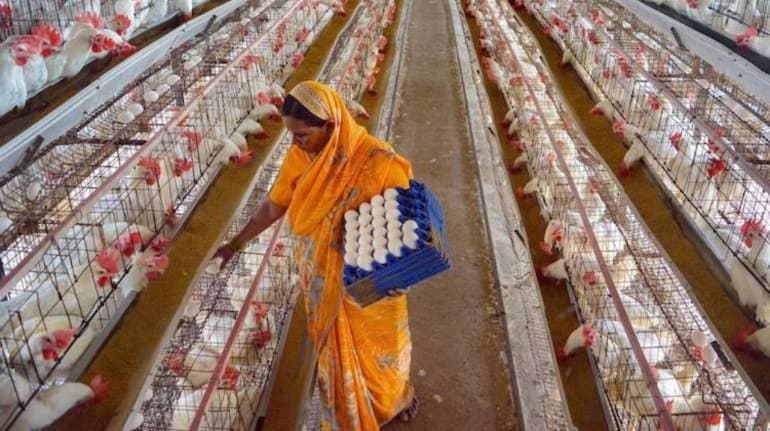



Poultry and egg prices in India have increased by about 20 percent following a shortfall in production, a prolonged summer, and a rise in feed costs.
Although consumers are shelling out more to eat chicken, poultry farmers are making a profit after suffering heavy losses in the wake of the pandemic. Even as egg prices reach new heights, there is no dearth of demand.
Feed prices have started cooling, with maize prices dropping. Usually, as the summer gives way to the rainy season, poultry consumption increases. Hence the industry reckons that poultry prices will not decline much.
“With summer getting extended with inadequate rains, there is high mortality in the poultry farms, leading to a shortage. Besides, the feed cost remained high in the past few months, raising production costs,’’ said K Anand, general manager at Venkateshwara Hatcheries.
Wholesale chicken prices reached about Rs 110 per kg. Egg prices are in the range of Rs 5 to 5.50 each. Egg prices are at a new high and they are retailing at Rs 7 each in major markets.
Egg production
Since chicken is fetching good prices, there has been a shift from layer birds, which are raised to lay eggs, to broiler birds, which are raised for meat production, in some regions. Dressed chicken – ready for sale or consumption – sells at about Rs 300 per kg in metros and towns.
“There is around 20 percent shortage of layer birds in the farms, which, along with excess heat, has led to a lower production of eggs,’’ said Sasti Kumar, director at Ponni Group of Companies, an egg producer in Namakkal, Tamil Nadu.
Total egg production at Namakkal, the egg hub of the country, has fallen to 40-45 million a day from 50 million a day.
Last year, India’s egg exports surged on higher demand from the Gulf countries, especially during the FIFA World Cup in Qatar, as supplies from Ukraine slumped after the start of the war with Russia. Oman and the United Arab Emirates were already large importers of Indian eggs and Qatar joined the list.
However, this year, egg exports have fallen to about 1 million a day from 2.5 million a day.
“Eggs from Turkey have become cheaper and consumption has come down with the summer setting in the Gulf countries,’’ said PV Senthil, secretary of the Livestock and Agri-Farmers Trade Associations.
However, after schools reopened, egg demand has shot up, with states such as Tamil Nadu including eggs in the noon meal scheme for children.
“There has been a delay in the arrival of new batches of chicks in the farms. This has affected the prices, which are likely to remain high in the next couple of months because of demand,’’ said Senthil.
The cost of producing an egg is about Rs 4.70 and in the past couple of years, farmers have been getting less than this as there was excess supply in the market after the outbreak of the pandemic. Post-Covid, demand for protein-rich food including poultry and eggs rose and this led to increased production.
Poultry feed price changes have been a significant factor in production costs of farms. The feed became expensive early this year as the price of maize, a key ingredient, increased by about 25 percent to Rs 25-26 per kg.
Prices of soybean, the other main ingredient, have been stable this year. A shortfall in soybean last year had led to imports of a genetically modified variety last year to meet the requirements of the industry.
“Maize prices have fallen as the kharif crop has been harvested. The feed industry needs around 20 million tonnes of maize annually, of which poultry feed accounts for 16 million tonnes. The trade forecast of the crop estimate is about 30 million tonnes, which will be sufficient to meet the demand,’’ said Neeraj Kumar Srivastava, former chairman of Compound Livestock Feed Manufacturers Association.
India exports maize to other Asian countries, including Bangladesh, which is a major buyer.
“This year, Bangladesh has become self-sufficient in the commodity and hence its offtake will be lower,’’ said Srivastava.
The anticipated soybean crop in September and the rabi harvest of maize, dependent on the monsoon rains, will determine how feed prices will move in the second half of the year.
Discover the latest Business News, Sensex, and Nifty updates. Obtain Personal Finance insights, tax queries, and expert opinions on Moneycontrol or download the Moneycontrol App to stay updated!
Find the best of Al News in one place, specially curated for you every weekend.
Stay on top of the latest tech trends and biggest startup news.